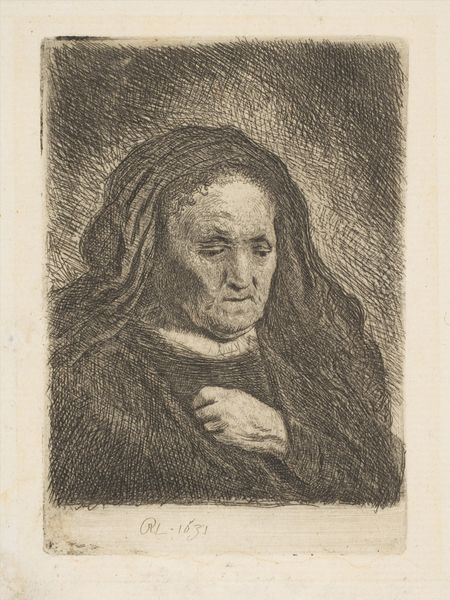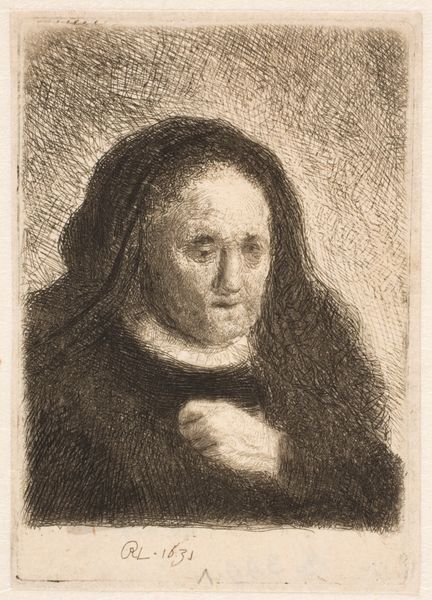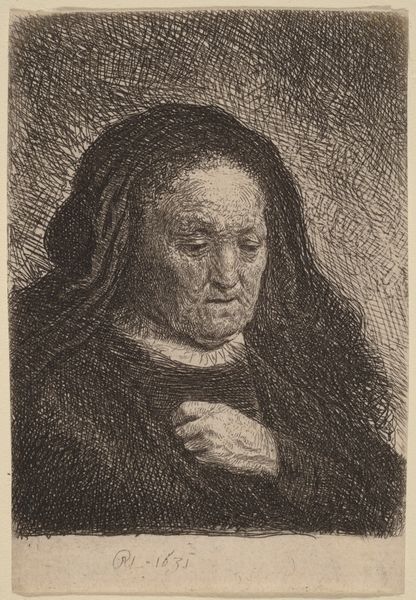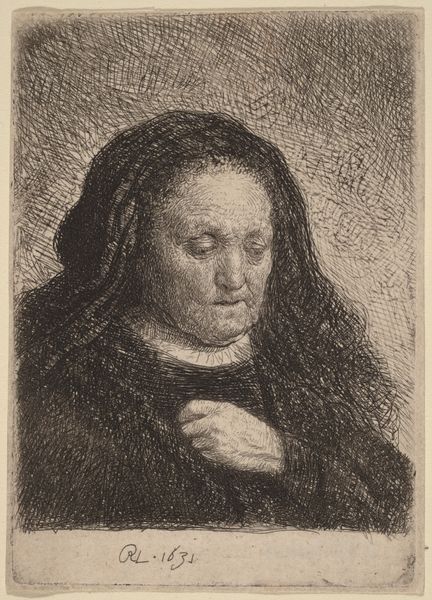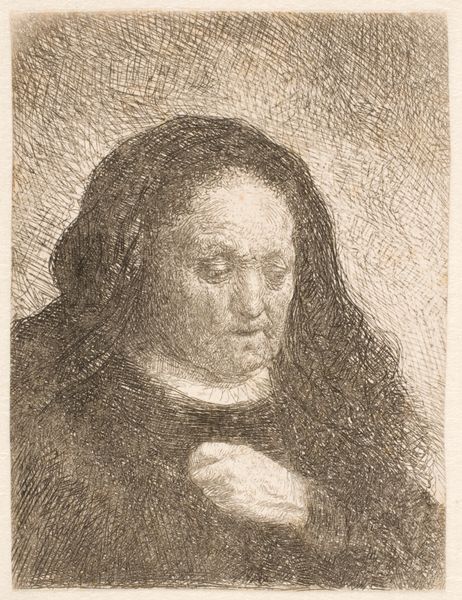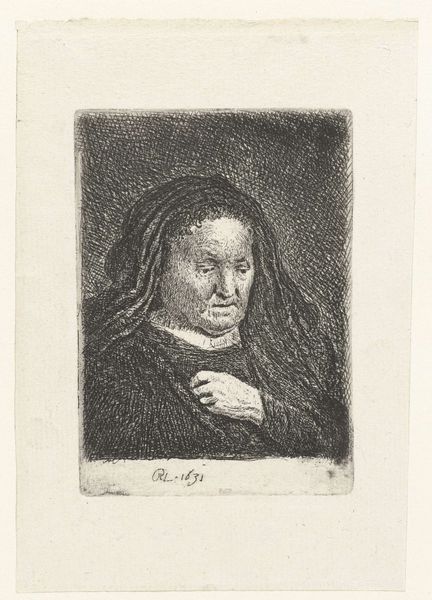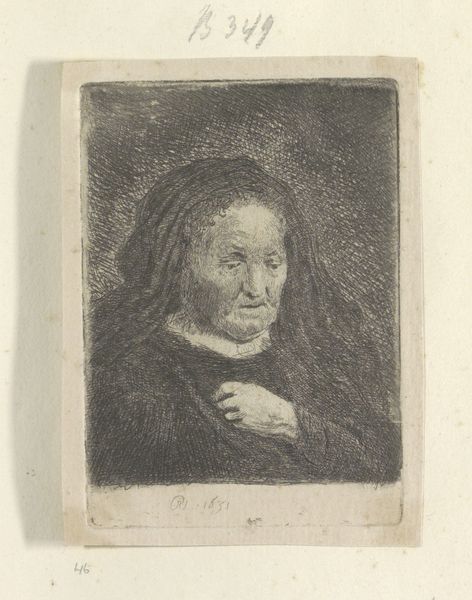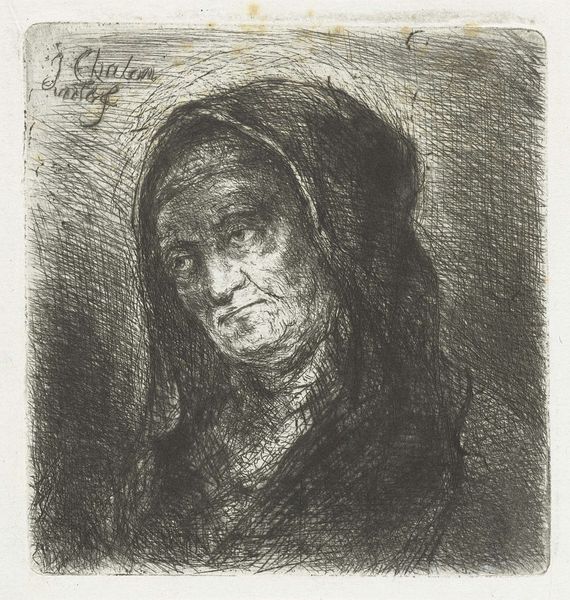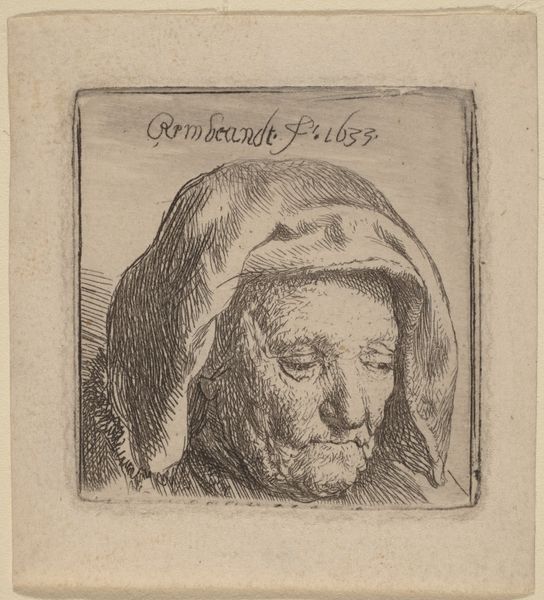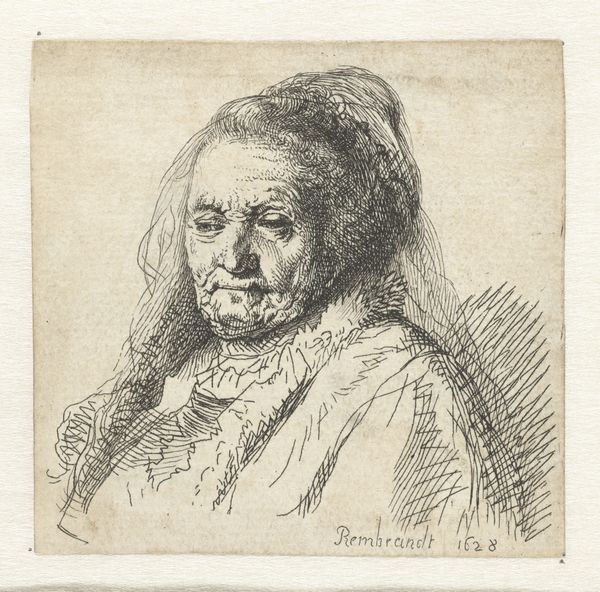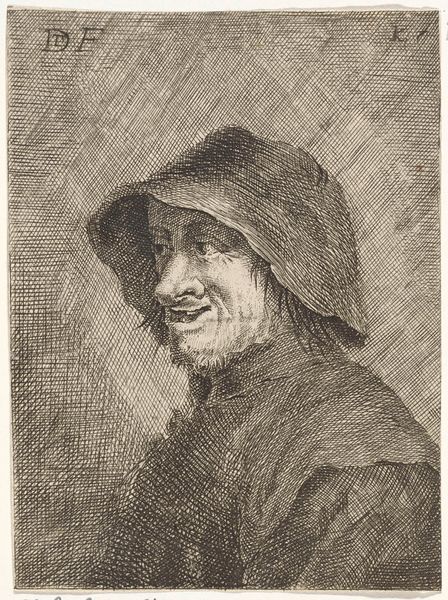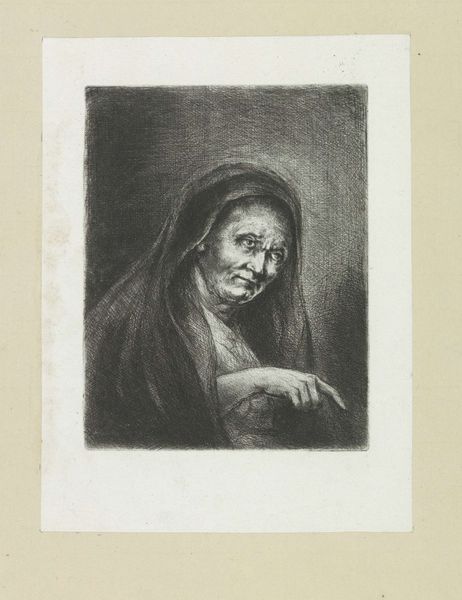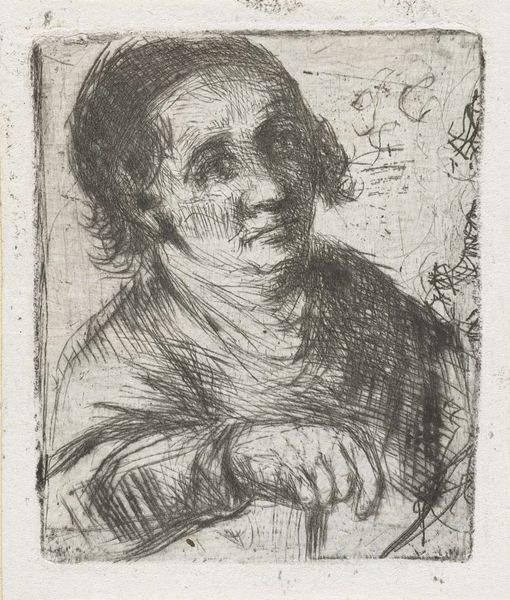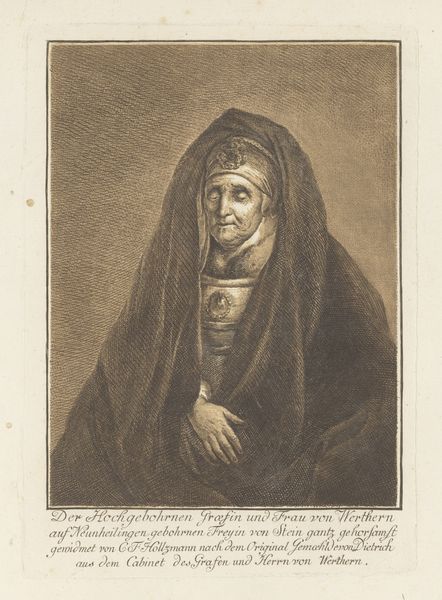
The Artist's Mother with Her Hand on Her Chest 1720 - 1775
0:00
0:00
drawing, print, etching
#
portrait
#
drawing
#
baroque
# print
#
etching
#
pencil drawing
Dimensions: Sheet (trimmed): 3 3/8 × 2 11/16 in. (8.6 × 6.8 cm)
Copyright: Public Domain
Curator: Looking at this image, there's an overwhelming sense of stillness. The textures almost vibrate, but the subject herself seems completely at peace. Editor: Indeed. Today, we're observing Rembrandt van Rijn's etching, "The Artist's Mother with Her Hand on Her Chest," created sometime between 1720 and 1775. It's currently held at the Metropolitan Museum of Art. This image is an intimate depiction reflecting societal perspectives on age. Curator: That date is interesting, the date span feels unusual. But speaking strictly about the picture before us: Notice how the lines create a visual buzz? That hatching! It defines everything from the folds of her clothing to the shadows on her face, creating depth and form through the strategic play of dark and light, a truly remarkable study of the value of light in the absence of it. Editor: Rembrandt repeatedly returned to the depiction of aging figures throughout his career, showing wrinkled skin with unique humanity in Dutch Golden Age culture. These images of his mother not only acted as portraits but as vehicles to show his mastery of etching and an ongoing consideration about issues of likeness, realism, and the socio-economic value of family. Curator: Exactly, his technical facility and the way the hatching is so expertly handled creates the velvety blacks but also those areas of striking white—there’s such economy of means but no sense of the composition feeling at all sparse or unfinished. The lack of sharp focus, especially around the face, also evokes a sense of tenderness and contemplation. Her averted gaze is especially captivating. Editor: Absolutely. Considering Rembrandt's historical context, images like this served multiple functions. It could be about his emotional and financial position during a difficult period in his life. Art functioned as a public, or in this case, personal declaration of independence from prevailing social values, to show familial relations, and as personal expressions of human complexity against the then-popular classicism that preferred showing perfect idealized images. Curator: It really comes down to the profound simplicity of line and form. Editor: Which when contextualized, gains even greater nuance through considering the historical significance of portraiture as an index of family relations during his career. A powerful interplay of observation and social commentary.
Comments
No comments
Be the first to comment and join the conversation on the ultimate creative platform.
